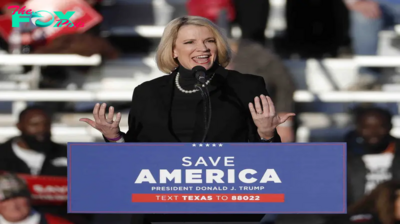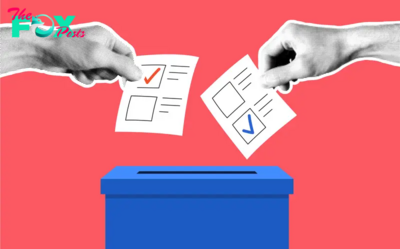US News
The Student Loan ‘On-Ramp Period’ Is Ending. How It Will Affect You
The “on-ramp” repayment plan—a buffer given to student loan borrowers as post-pandemic payment pauses resumed last fall— will end on Monday, Sept. 30; and once again, borrowers will be subject to consequences for late or non-payment. The move comes as the Biden Administration’s broader student relief efforts remain ensnared in legal challenges.
The 12-month safety net protected student loan borrowers from being reported to credit bureaus, being placed in delinquency or default, or being referred to debt collection agencies if they missed or had a late payment—though interest still accrued on their loans. Some 43 million Americans have federal student loan debt totaling more than $1.5 trillion.
“For millions of borrowers, this is going to be the first time they are experiencing the negative economic consequences of falling behind on student loans, " says Aissa Canchola Bañez, policy director of the nonprofit Student Borrower Protection Center (SBPC). “I think that is a very important piece of context as we're talking about the severity of this safety net protection expiring.”
Canchola Bañez works for one of more than a hundred advocacy, labor, and civil rights groups that signed a letter on Sept. 19 asking Department of Education Secretary Miguel Cardona to extend both the on-ramp period and the Fresh Start program, which helped borrowers who had defaulted on their federal student loans. Both initiatives are set to end on Sept. 30.
Advocacy efforts, however, were unfruitful. “There are no plans to extend the on-ramp period. Borrowers should go to studentaid.gov to learn more about repayment options available to them,” a Department of Education spokesperson told TIME in a statement.
Advocates argue that the end of the on-ramp plan program comes amid heightened instability for borrowers who have been impacted by lawsuits limiting facets of Biden’s student loan forgiveness efforts. “We have borrowers that are really struggling to afford their payment and are not able to access some of the most affordable repayment options,” says Canchola Bañez. “This is probably the worst time to consider allowing [a] safety net like this to expire, because our most vulnerable borrowers are not able to easily access an affordable repayment option right now.”
Aside from the Supreme Court’s strike down of the Administration’s broader program last June, which would have forgiven $400 billion in loans, recent litigation has also targeted parts of the Saving on a Valuable Education (SAVE) student loan repayment plan, which the Department of Education dubbed the “most affordable repayment plan ever." The plan is currently blocked and borrowers have been put into interest-free forbearance. States behind the lawsuits argue that President Joe Biden needs Congressional approval in order to provide loan relief under SAVE.
Eight million borrowers currently enrolled in that program were set to receive automatic forgiveness on their loans after making 20-25 years of payments.
What should borrowers know?
Moving forward, borrowers should know they could face financial harm, including a decrease in their credit scores, if they do not make payments towards their student loans.
Starting in October, consumers who have a payment that is 90 days late could see impacts on their credit reports in January, Liz Pagel, senior vice President of Consumer Lending at TransUnion, said in a statement to TIME. “Unlike other credit products, student loans payments are not marked delinquent until they reach 90 days past due. Those delinquencies will impact credit scores.”
Borrowers who miss payments for 270 days could see their loans go into default, which could cause the garnishment of their personal social security, tax refund, and wages.
Although the Department of Education cannot currently process any new applications for the SAVE plan due to pending lawsuits, Canchola Bañez says that borrowers can still apply for income-driven payment plans, including SAVE. SAVE paper applications are currently being accepted. (Online applications are indefinitely closed.)
Borrowers should also be cautious of the actions their loan servicer is taking. Most recently, Navient was ordered to pay $100 million to borrowers after being accused by the U.S. Consumer Financial Protection Bureau (CFPB) of misleading student loan borrowers and not properly processing payments.
“If your servicer is giving you misinformation, if your servicer is giving you a runaround, submit a complaint to the CFPB submit a complaint to the student loan ombudsman, or the FSA ombudsman at this Department of Education, because these are the ways that we as advocates and policymakers keep track of harmful trends,” she says.
-

 US News1d ago
US News1d agoFlorida Man Arrested and Charged With Planning to Bomb the New York Stock Exchange
-

 US News1d ago
US News1d agoU.S. Gathers Global Group to Tackle AI Safety Amid Growing National Security Concerns
-

 US News2d ago
US News2d agoTexas Offers Trump Land on U.S.-Mexico Border for Potential Mass Deportations
-

 US News2d ago
US News2d ago4B Is Not the Winning Strategy to Resist the Patriarchy People Think It Is
-

 US News2d ago
US News2d ago‘Bomb Cyclone’ Threatens Northern California and Pacific Northwest
-

 US News2d ago
US News2d agoClimate Action in Trump 2.0
-

 US News2d ago
US News2d agoWhat Victoria Woodhull’s Presidential Run Can Teach Us About America Today
-

 US News3d ago
US News3d agoThese Races Still Don’t Have a Clear Winner Two Weeks After Election Day



















